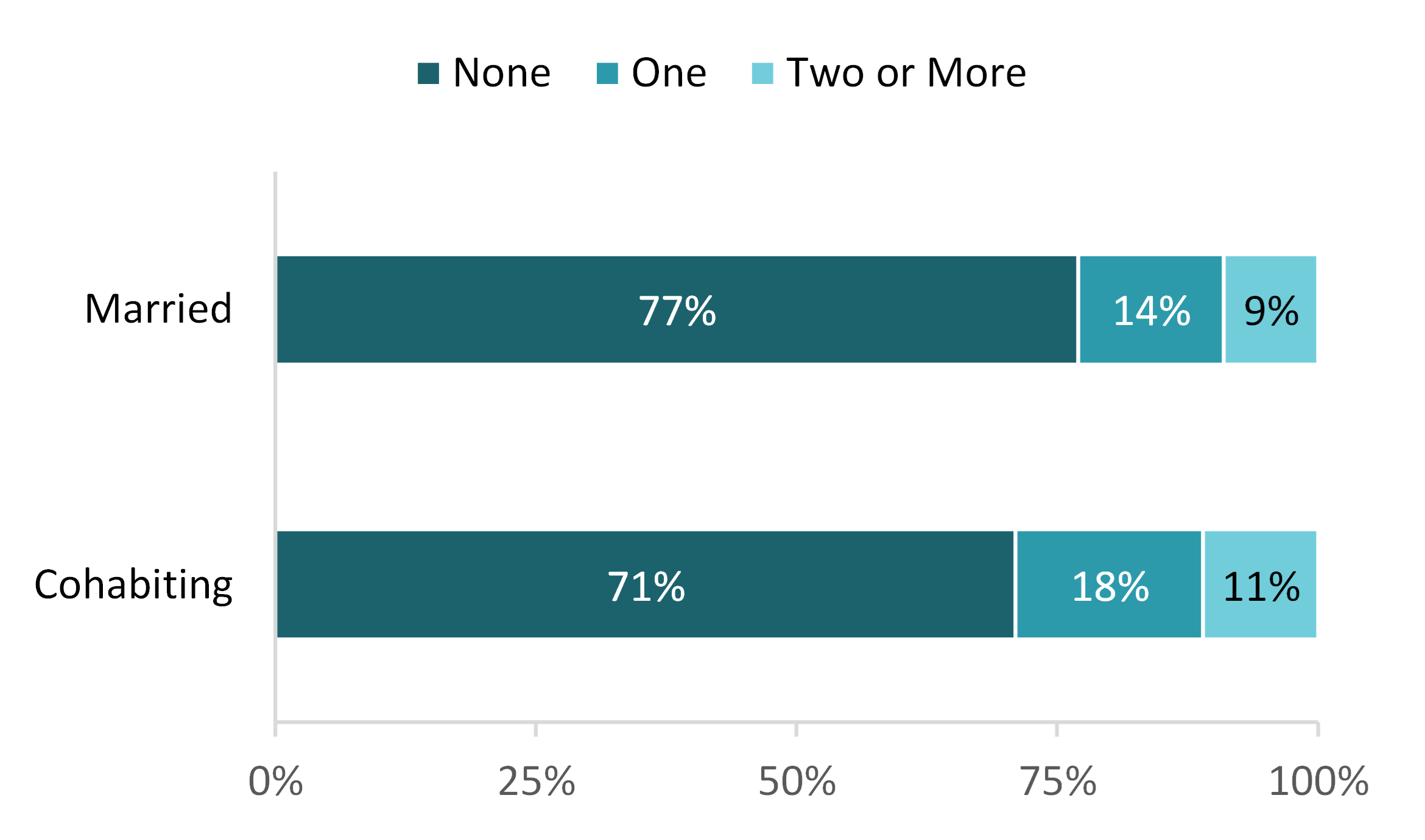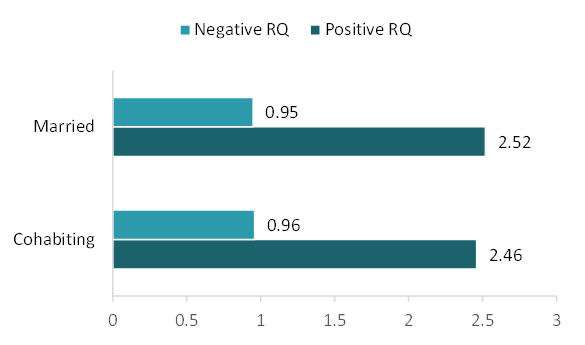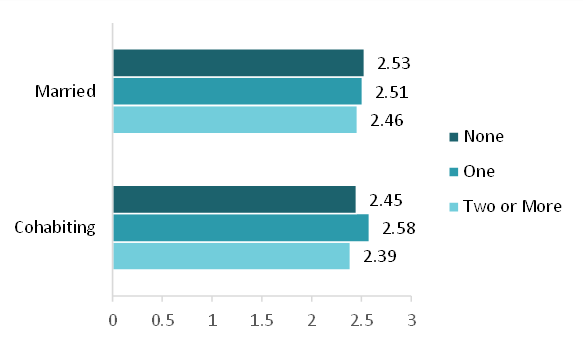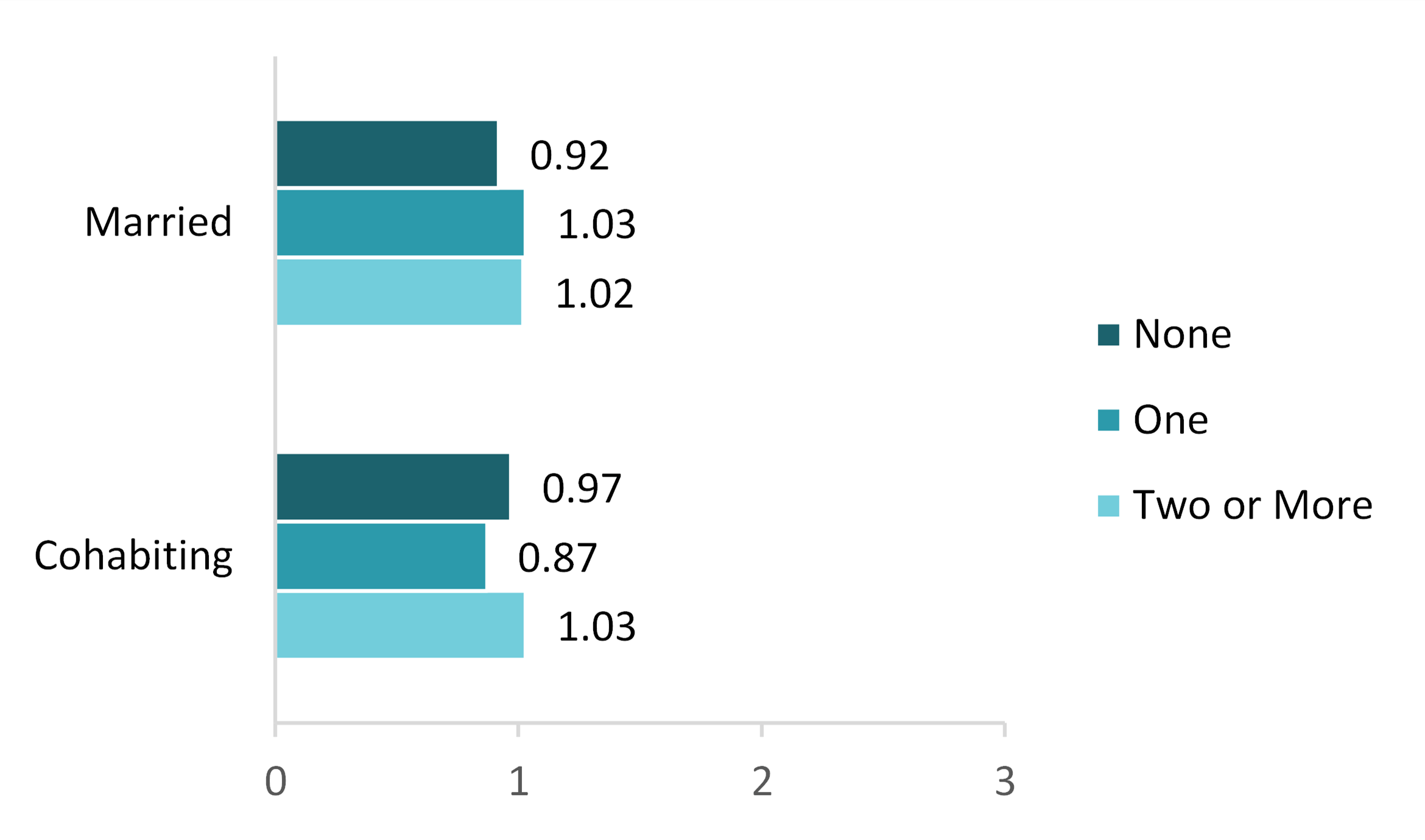Functional Limitations in Relationship Quality among Adults in Midlife
Family Profile No. 12, 2025
Authors: Natalie E. Bankey and Francesca A. Marino
As individuals age, the likelihood of developing a disability increases (Berlau et al., 2009), often leading to functional limitations such as challenges with activities of daily living (ADL) and instrumental activities of daily living (IADL). Declining health is associated with decreases in marital quality. For example, the onset of a chronic illness in wives (but not husbands) is associated with an elevated risk of divorce (Karraker & Latham, 2015; Latham-Mintus et al., 2022; Yorgason et al., 2008). However, less attention has been given to the daily struggles associated with aging, which play an important role in determining marital quality (Tracy & Utz, 2020). With divorce rates rising among older adults, also known as gray divorce (Brown & Lin, 2012), it is crucial to explore how functional limitations influence relationship quality. Using the 2012 and 2016 waves of the Health and Retirement Study (HRS), this family profile examines the linkages between functional limitations on relationship quality among individuals aged 50 to 65, distinguishing cohabiting and married relationships and the number of functional limitations experienced.
Functional Limitation Across Coresidential Relationship Status
Functional limitations were measured using a combined/summed scale (0/1/2+) “0- No functional limitation issues, 1- One functional limitation issue, 2- Two or more functional limitation issues.” See Figure 1.
- Married middle-aged adults more often had no ADL/IADL difficulties (77%) compared to those who were cohabiting (71%).
- Cohabiting middle-aged adults more often experienced at least one ADL/IADL difficulty (29%) than those who were married (23%).
Relationship Quality Across Coresidential Relationship Status
Relationship quality was measured using two scales of positive (“How much does your partner really understand the way you feel about things?”) and negative (“How much does your partner criticize you?”) relationship quality (0-3) (range: 0- Not at All, 1- A little, 2- Some, 3- A lot). See Figure 2.
- Both married and cohabiting middle-aged adults experienced similar levels of positive and negative relationship quality (see Figure 2).
- Among married middle-aged adults, the average for negative relationship quality was 0.95, whereas the average for positive relationship quality was 2.52.
- Among cohabiting middle-aged adults, the average for negative relationship quality was 0.96, whereas the average for positive relationship quality was 2.46.
Figure 1. Share of Middle-Aged Adults with None, One, or 2+ ADL/IADL Difficulties by Marital Status

Figure 2. Mean Positive and Negative Relationship Quality for Married and Cohabiting Adults

Source: NCFMR analyses of the Health and Retirement Study, 2012 & 2016
Positive Relationship Quality by Functional Limitations Across Coresidential Relationship Status
- Average reports of positive relationship quality were similar across levels of functional limitations for married and cohabiting middle-aged adults (see Figure 3).
- Married middle-aged adults had slightly higher average positive relationship quality than those cohabiting when experiencing no functional limitations (2.53 versus 2.45). Cohabiting middle-aged adults had slightly higher average positive relationship quality when only experiencing one functional limitation (2.58 versus 2.51) or two or more functional limitations (2.46 versus 2.39).
Figure 3. Mean Positive Relationship Quality by Number of ADL/IADL Difficulties for Married and Cohabiting Middle-Aged Adults

Negative Relationship Quality by Functional Limitations Across Coresidential Relationship Status
Figure 4. Mean Negative Relationship Quality by Number of ADL/IADL Difficulties for Married and Cohabiting Middle-Aged Adults

- Average reports of negative relationship quality varied only slightly across levels of functional limitations for both married and cohabiting middle-aged adults (see Figure 4).
- Married middle-aged adults had higher average negative relationship quality when experiencing only one functional limitation issue (1.03 versus 0.87).
- Cohabiting middle-aged adults had higher average negative relationship quality when experiencing no functional limitations (0.97 versus 0.92) and two or more functional limitations (1.03 versus 1.02).
Data Sources:
University of Michigan. (2022). RAND HRS longitudinal file 2018 (V2) [Public use dataset]. Produced and distributed by the University of Michigan with funding from the National Institute on Aging (grant numbers U01AG009740 and R01AG073289). https://hrs.isr.umich.edu/
University of Michigan. (2021, 2023). RAND HRS 2012 (V3A) and 2016 Fat Files (V2C) [Public use datasets]. Produced and distributed by the University of Michigan with funding from the National Institute on Aging (grant numbers U01AG009740 and R01AG073289). https://hrs.isr.umich.edu/
References:
Berlau, D. J., Corrada, M. M., & Kawas, C. (2009). The prevalence of disability in the oldest‐old is high and continues to increase with age: Findings from the 90+ study. International Journal of Geriatric Psychiatry, 24(11), 1217–1225. https://doi.org/10.1002/gps.2248
Brown, S. L., & Lin, I.-F. (2012). The gray divorce revolution: Rising divorce among middle-aged and older adults, 1990-2010. The Journals of Gerontology Series B: Psychological Sciences and Social Sciences, 67(6), 731–741. https://doi.org/10.1093/geronb/gbs089
Karraker, A., & Latham, K. (2015). In sickness and in health? Physical illness as a risk factor for marital dissolution in later life. Journal of Health and Social Behavior, 56(3), 420-435. https://doi.org/10.1177/0022146515596354
Latham-Mintus, K., Holcomb, J., & Zervos, A. P. (2022). Linked lives: Does disability and marital quality influence risk of marital dissolution among older couples? Social Sciences, 11(1), 27. https://doi.org/10.3390/socsci11010027
Tracy, E. L., & Utz, R. L. (2020). For better or for worse: Health and marital quality during midlife. Journal of Aging and Health, 32(10), 1625-1635. https://doi.org/10.1177/0898264320948305
Yorgason, J. B., Booth, A., & Johnson, D. (2008). Health, disability, and marital quality: Is the association different for younger versus older cohorts? Research on Aging, 30(6), 623-648. https://doi.org/10.1177/0164027508322570
Suggested Citation:
Bankey, N. E., & Marino, F. A. (2025). The role of functional limitations in relationship quality among adults in midlife. Family Profiles, FP-25-12. Bowling Green, OH: National Center for Family & Marriage Research. https://doi.org/10.25035/ncfmr/fp-25-12
This work was supported by a grant from the National Institute on Aging (R15AG047588 to S. L. Brown and I.-F. Lin) and by the Center for Family and Demographic Research at Bowling Green State University, which received funding from the Eunice Kennedy Shriver National Institute of Child Health and Human Development (P2CHD050959).
This project is supported with assistance from Bowling Green State University. From 2007 to 2013, support was also provided by the U.S. Department of Health and Human Services, Office of the Assistant Secretary for Planning and Evaluation. The opinions and conclusions expressed herein are solely those of the author(s) and should not be construed as representing the opinions or policy of any agency of the state or federal government.
Updated: 05/02/2025 12:34PM

